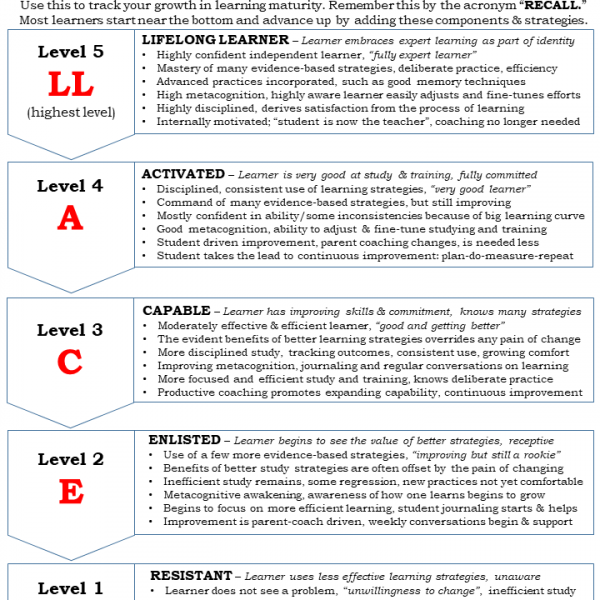
How Learning Objectives Can Help You Teach Better

Reading time: 8 minutes
Summary
As a homeschooling parent, you are most likely very familiar with learning objectives. You often see them in your instructor guides, or perhaps listed at the top of the lesson materials provided to you. But how can you use them to improve your home classroom instruction?
Learning objectives provide a foundation for both the student and the instructor by focusing the learning experience on outcomes. They answer this often-unclear question – “what exactly is the student expected to know and be able to do at the completion of this lesson?” When you run learning experiences you need to be guided by what you are trying to improve.
This article explains how and when you should use the learning objectives provided to you in your curriculum. It also includes some tips on how to define and write learning objectives for the learning experiences you create. Learning objectives are so important you should even draw them up for your field trips. Read more on how you can benefit from them.
What are Learning Objectives?
In my distant past training as a teacher, the importance of learning objectives (lets’ call them LOs for short) was drummed into our undergraduate brains. Learning objectives are statements that clearly describe what students will be able to know, do, or value as a result of the educational experience or the lesson you are about to teach. They force us to think about why we are teaching this lesson.
Here’s one “official” definition that I got in teacher training:
| Learning objectives are statements that define the expected goal of a course, lesson or activity in terms of demonstrable skills or knowledge that will be acquired by a student as a result of instruction. |
Let’s break this down. Two things are clear in this definition – 1) there needs to be a stated outcome and 2) there should be something specific that can tell you determine if the students got there, or not.
Or here is a simpler way to define it:
A learning objective is a statement describing a competency or performance capability to be acquired by the learner.
Most of the time these are written as a series of bullet points.
Learning objectives are written so that those who are unfamiliar with the subject can clearly understand what they can expect to gain from the lesson. Ideally, they should include specific things that help identify a measurable outcome that is desired in terms of behaviors, student work, or new knowledge. Here’s an example of a behavioral outcome:
At the end of the workshop, students will know the five steps to safely changing a flat tire.
Just for fun, let’s say you are an auto dealership trainer! You can easily test this outcome for each student if you wanted to. This is the advantage of writing behavioral outcomes. They translate into something you can observe. In this case, you could decide on easy to assess safe tire changing scores like: yes, no, under 5 minutes, over 5 minutes, etc.
When you are designing the lesson, state your objectives in a way that you will be able to test that your kids successfully met them. This isn’t just for your own purposes; the students also want a way to judge their accomplishment for their hard work!
If you look at your objectives and realize you can’t measure them – this means they are too loose, or worse, not really learning objectives. When this happens, go back and tighten them up so that you have better statements.
Here’s an example of a poorly written one because you can’t determine if you met it:
At the end of this lesson, students will know what to do when they have a flat tire.
But – what things? Call AAA? This doesn’t explain to the student what they are expected to know or do. It doesn’t focus the instructor on what to teach. It’s pretty vague — you’ll have a hard time creating the right test to measure your success against the objective.
Your tests and quizzes must map up to specific learning objectives. This is why you start with LOs.
What is the Purpose of Learning Objectives?
We know clear learning objectives help both the instructor and the student know that they have succeeded. They are not an extra step to perform, they are the heart of your lesson.
When they came with your curriculum
Review them before you buy the materials. Good learning objectives are a sign of better designed materials. No objectives – beware. You may waste your money.
The day before you teach, review them and remind yourself what will be important.
Look at them again before you begin your lesson as a double check and have them handy for reference when you teach to help you remain focused on the desired learning outcomes. In class, I like to review them during individual learning activities which gives me time to reflect on what else I might do to make the lesson better.
When I have missed something important, after break I might do a short review and just plug that missed information seamlessly right into this conversation.
Customize your lessons and expand on them. Add your own additional learning objectives as you think about how you want to tailor them to your family.
When you are designing your own lesson
As your first step, decide specifically what you want your kids to learn. If your goal is fuzzy, your lesson likely will not be a very good learning experience. I have found writing them is a two-step process – first I brainstorm and just jot down my ideas, then I review these and turn them into real objectives that are more specific. Usually in the second pass I find lots of ideas I didn’t think about in the first.
Want to involve your kids? You can also write objectives from your kid’s perspective – what do your kids want to learn from this field trip? Ask them and create them together.
Putting them down on paper will force you to refine and clarify both what and how you will teach it. It will also push you to be more creative. I find seeing them causes me to think of more useful things I can incorporate into the lesson or experience. And this can be a fun exercise when you are able to involve your kids in it. They start thinking about teaching themselves!
If it’s important, plan for it
Stephen Covey talked about planning and thinking about outcomes in his book, The 7 Habits of Highly Effective People, where he described these principles, as his first three habits:
- Be proactive
- Begin with the end in mind
- Put first things first
Defining your desired learning outcomes is consistent with this.
When you begin creating a lesson or course, you want to design with the end in mind. Remember the best way to get started is by writing behavioral and measurable, learning objectives. Practice doing this and learn to get good at it. It makes a big difference.
Why They are Important
Let’s deal with those pesky objections that some parents may have – why bother when I know what I want to teach? My kids don’t care about objectives – they’re 8 and 10! What’s in it for me? (Remember this is the famous acronym on personal motivation WIIFM).
There are lots of benefits for both students and parents you don’t want to lose.
How they help students
Here’s some of the benefits for the kids along with fun tire changing examples:
- Sharing and listing the learning objectives for today’s learning experience gets the instructor and students on the same page. (“I am going to show you how to use this tire wrench and this jack to lift the car, take off this tire, replace it, and how to put all this away so you are ready to drive off.”)
- When students know what is expected from them and what they have to be able to do at the end of the lesson they become more involved and motivated to learn. (“I am going to ask one of you to change this tire at the end of the lesson.”)
- You have eliminated potential surprises by creating clear expectations. (“What – I thought we were going to learn to call the Auto Club!”)
- Students become more accountable when they understand you are making them responsible for meeting these outcomes. (“Here’s the 5 steps you are expected to know and follow today”)
- When you share the learning objectives, it allows them to ask questions, so they better understand the learning process. (“What – you want me to learn how to change that tire on this car?!!” Yes, that’s right-this big tire.”)
- Well written objectives help students understand the purpose of the learning experience and can provide a sense of accomplishment and competence at completion. (When you are old enough to drive, you will need to know how to do this in an emergency.”)
How they help you, the instructor
There’s also lots of benefits for you when you actively use them:
- Most important, LOs will focus you – they compel you to bring you’re “A” game and stay “radar locked” on your mission – the outcomes of your lesson
- Use them to establish high expectations for learning.
- They provide a confidence building backstop during the lesson – if you get lost in distracting sidebar discussions, they are there as a checklist to help you find your way back
- They can help you keep track of your time – it’s easy to get off track when you teach. Midway through your lesson, check off the ones you have covered. Then ask yourself – “How many are left – how much time do I have to cover them?”
- They make it really easy to summarize your key points at the end of the lesson. Go through them one by one and make summary or expansive comments. You can also turn them backwards and use them to ask questions. (“What step do you need to do before you jack the car up?”)
- They will guide you on what questions to ask the students to test understanding
- When you have well written objectives, writing your quizzes is easy
You can build additional activities around good learning objectives
Here’s a few more ideas:
- Objectives can pave the way for student-led discussions. Take one of your learning objectives and use it to guide a deeper discussion.
- Use them to guide follow-up activities. Give research assignments on a singular objective.
- Gather them all up and use them to guide a end of month learning review.
There are more reasons for using learning objectives, but these are the most important to keep in mind.
When to Use Them
When’s the best time to use them? There are lots of places, but here are my top 4.
- First, when you are preparing for your lesson or learning experience. If you are team teaching, you will want to discuss them and talk about who does what.
- Always list or describe them at the start of your lesson or learning experience. I like to leave them on a white board so we can review them as we go. And be sure to let the students know that learning them is a joint accountability.
- Find a mid-point or break around the middle of the lesson to personally review them to check your progress.
- Use them at the end of the lesson to review the key points they should have learned. Take them and turn them into questions you ask your students. (“What did we learn today about jacking up the car?”)
Finally, I am reminded of the instructional advice given from the old timer to the newest instructor. It’s still valid advice — the 3 steps of teaching:
– Tell them what you are going to teach them, teach it to them, then review what you just taught them.
Use the learning objectives to guide each of these steps!
For more information on using and writing learning objectives, take a look at our Pa 10 and Pa 100 courses.






